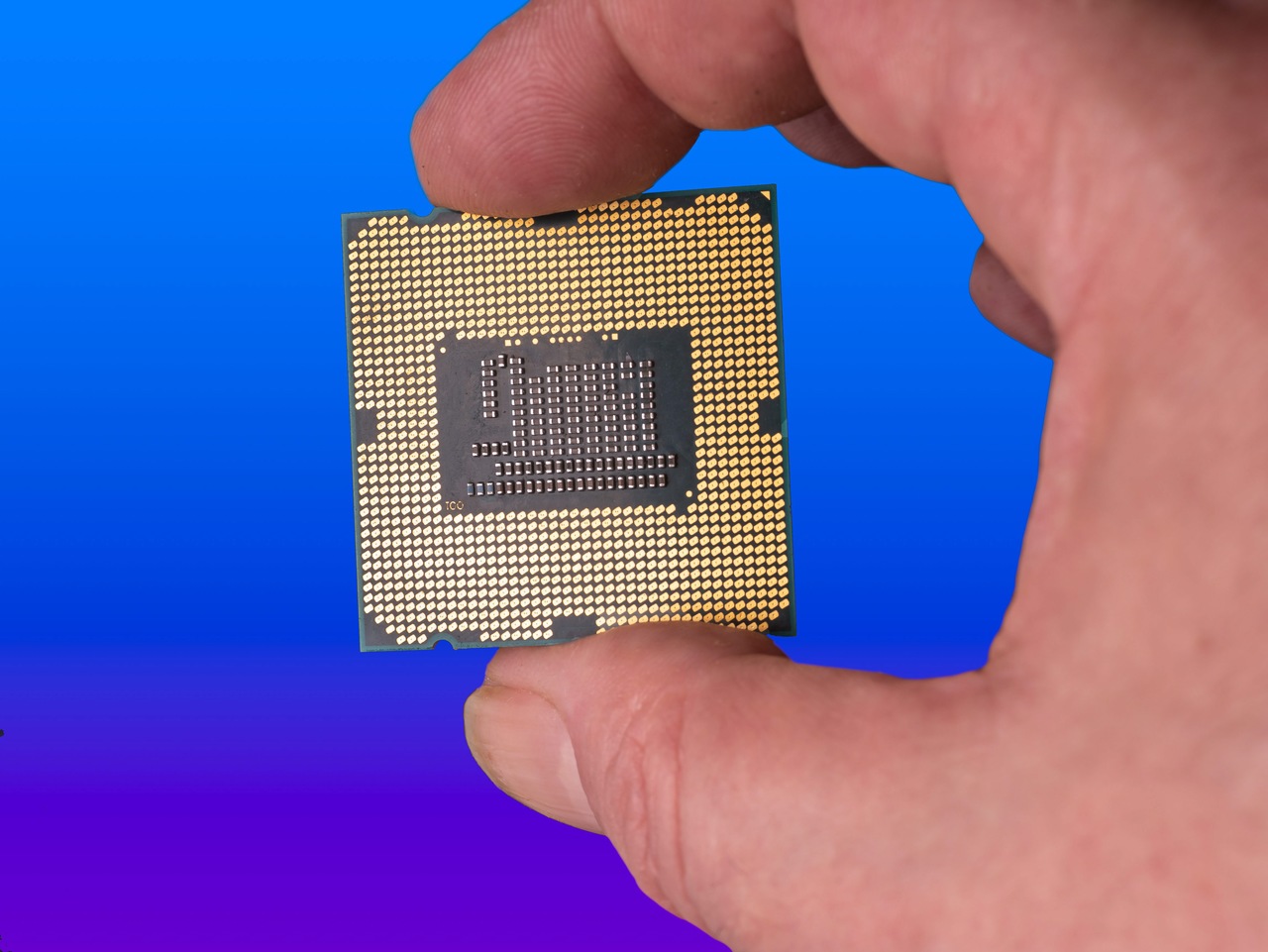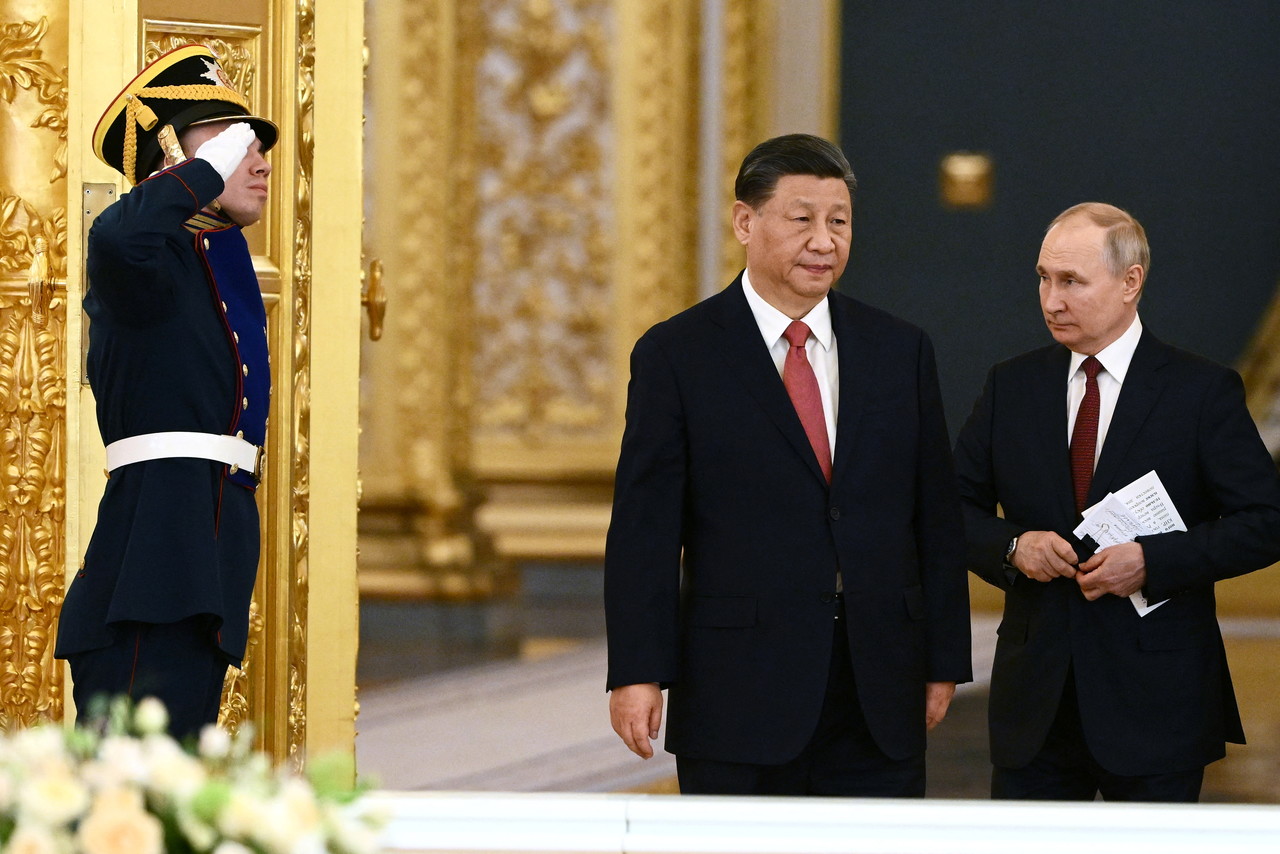Building a Coalition - the U.S. Faces Down Competition with China in the Chip Sector
In recent months, the U.S. has intensified its international efforts to limit China’s ability to produce the most advanced chips. The result includes the introduction by Japan and the Netherlands of restrictions on the export of modern machines for chip production. In response, China is trying to attract foreign investment and develop its own potential in this sector. The U.S. actions may significantly slow the pace of China’s technological development and economic growth and limit its potential to further strengthen its military capabilities. This may make it difficult for China to support Russia with dual-use products and render possible offensive actions against Taiwan harder.
 FLORENCE LO / Reuters / Forum
FLORENCE LO / Reuters / Forum
In 2022, the U.S. accelerated the development of its own chip production capacity (among others, of semiconductors and components constituting the basis of all integrated circuits) through the entry into force of the CHIPS and Science Act. Chips are widely used not only in the civilian sphere, for example, in the production of vehicles and electronics, but also in military applications. They are also fundamental to the further development of artificial intelligence (AI) technology and quantum computers. The U.S. has intensified its efforts to reduce the supply of foreign chips to China and limit technology transfers in this sector. The culmination of the American actions was the introduction in October 2022 of licensing for the supply of chips and machines for their production from the U.S. to China, as well as for the sale of these products by companies from other countries if they use American components. This contributed to a decline in chip imports by China by 27% year on year in January-February this year. The U.S. goal is to gain an advantage in the competition with China by limiting its potential to make and use chips below the 10 nanometre specification used in modern technology (currently, Chinese companies mainly manufacture larger chips). For the success of the U.S. actions, it is also important to limit China’s access to the technologies of other global producers that could replace the American products now unavailable to China.
Global Chip Market
The chip market is worth around $500 billion worldwide and can double by 2030. American companies such as Nvidia or Intel are leaders in chip design. According to data from the BCG consulting company and the American Semiconductor Industry Association (SIA), in 2021 these companies accounted for 46% of global revenues of that activity. However, in the production of integrated circuits, Asian countries are key. Taiwan has the largest production capacity, at 22% of global deliveries (the leader is TSMC, including over 90% of the most advanced chips), South Korea has 21% (the largest suppliers are Samsung and SK Hynix), and Japan and China have around 15% each. The U.S. is fourth with 12% of global production (companies based in the U.S., however, are leaders in terms of the value of chips sold). In fifth place are European countries with a combined 9% share. Among the main entities supplying lithographic machines necessary to produce the smallest chips, apart from firms from the U.S., one can point to ASML from the Netherlands (the leader in the field of cutting-edge machines) and manufacturers from Japan (e.g., Canon or Nikon). In addition, among the important suppliers of materials used in the production of integrated circuits, there are Japanese and German companies, for example.
U.S. Actions
According to media reports, in January the U.S. persuaded the Netherlands and Japan to tighten controls on the export of chip-related technology to China. The agreement has not been officially confirmed, but its conclusion is visible in the decisions of both countries announced in March. The Netherlands announced the introduction of a license for foreign sales of chip production equipment, tying it to the issue of national security (however, it did not directly mention China in this context). The regulations will apply from this summer and mainly concern advanced deep ultraviolet (DUV) lithography machines supplied by ASML. The sale of state-of-the-art extreme ultraviolet (EUV) machines to China was suspended as early as 2019 under the Wassenaar Agreement on the export control of weapons and dual-use technologies (China is not a party to it). In turn, the Japanese government announced the introduction of licenses for the sale of 23 types of chip production machines, which are to apply from July this year. As an argument, Japan pointed to the desire to limit the use of products made in the country for military purposes. Like the Dutch authorities, it did not mention China directly —the licenses are supposed to apply to all countries.
The U.S. is also intensifying cooperation within the “Chip 4” group, including its partners from East Asia—Japan, South Korea, and Taiwan. The first meeting of representatives of the chip sector in this format took place in February this year (observers included representatives of governments). The aim of the “Chip 4” is to strengthen the resilience of modern technology supply chains, mainly for semiconductor and chip production. In February, the United States, Japan and South Korea also inaugurated the Dialogue on Economic Security, which is to facilitate cooperation in the exchange of technologically advanced products. Since 2021, there also has been the Trade and Technology Council created by the U.S. and the EU, which works on, among others, technological cooperation, economic security, or export control. The U.S. also strengthens cooperation in the field of research and development of technologies, including integrated circuits and quantum computers, for example, with Japan and India.
China’s Response
China describes the U.S. actions as striving to maintain “technological hegemony” and limiting its development opportunities. It calls on other countries not to succumb to American pressure, to respect the principles of free trade, and not to jeopardize their economic relations with China. In response to the U.S. activity, the Chinese government launched in April an investigation into the threat to the security of China from products made by Micron Technology, one of the largest U.S. chip manufacturers.
The importance of the development of chip production and self-sufficiency in this area was emphasised by Xi Jinping and other prominent Chinese Communist Party activists during the 20th party congress in October last year and the March session of the Chinese parliament, among others. China wants to attract foreign investments, including from the technology industry, for example, by announcing the facilitation of economic activity (e.g., Korean and Japanese companies have large investments in China). These plans may be hampered by the regulations contained in the CHIPS and Science Act, which make financial support from the U.S. government conditional on, among others, companies not developing production capacity in some countries, including China. China’s authorities support the development of Chinese companies in the chip sector. It is estimated that it allocates about $30 billion annually for this purpose, including through a special state fund, which, for example, in March this year. announced a grant of $1.9 billion for Yangtze Memory Technologies Co. (YMTC), one of China’s largest chip manufacturers. The Chinese authorities are also working on an extensive programme to support technology companies that may be worth more than $140 billion. Provinces, such as Jiangsu, and cities, such as Chengdu and Guangzhou, are already developing their own programmes in this area. So far, attempts to support chip production have had limited effect. In 2021, only 16% of the products used by China were manufactured locally (Chinese companies produced 6%), although as part of the implementation of the “Made in China 2025” programme in 2020, it was to be 40%.
Conclusions and Perspectives
U.S. actions in the chip sector may slow down the development of the Chinese economy and its military potential. However, the effectiveness of the American policy will largely depend on cooperation with other countries that have modern technologies at their disposal. The restrictions introduced by the Netherlands and Japan on the export of chip production machines may hit the technological potential of China, which does not have its own advanced solutions in this area, and its availability on the international market is very limited. The actions of both countries also show that U.S. policy is increasingly being accepted. In this context, China will put even greater emphasis on developing its own chip production potential.
It is advisable to coordinate the actions of the U.S., EU, and their partners both in the field of chip research and in introducing restrictions on the export of these products to other countries, for example, in the form of licenses. It should concern mostly solutions that can be used for military purposes. This is important in the context of China’s aggressive policy towards Taiwan or in limiting Chinese support for Russia (in the form of, for example, supplies of chips and dual-use products), which would make it difficult for it to continue its aggression against Ukraine. Measures limiting the export of technology may also encourage some EU companies to diversify their activities, which would reduce the possibility of China exerting economic pressure on the EU. The challenge will be to monitor for possible supply of products from the chip sector to China through third countries and the high degree of interdependence with China of countries with advanced technologies, including EU members, such as Germany or South Korea. Chinese retaliation is possible, as in the case of Micron Technology, to induce individual countries to change their policies.





